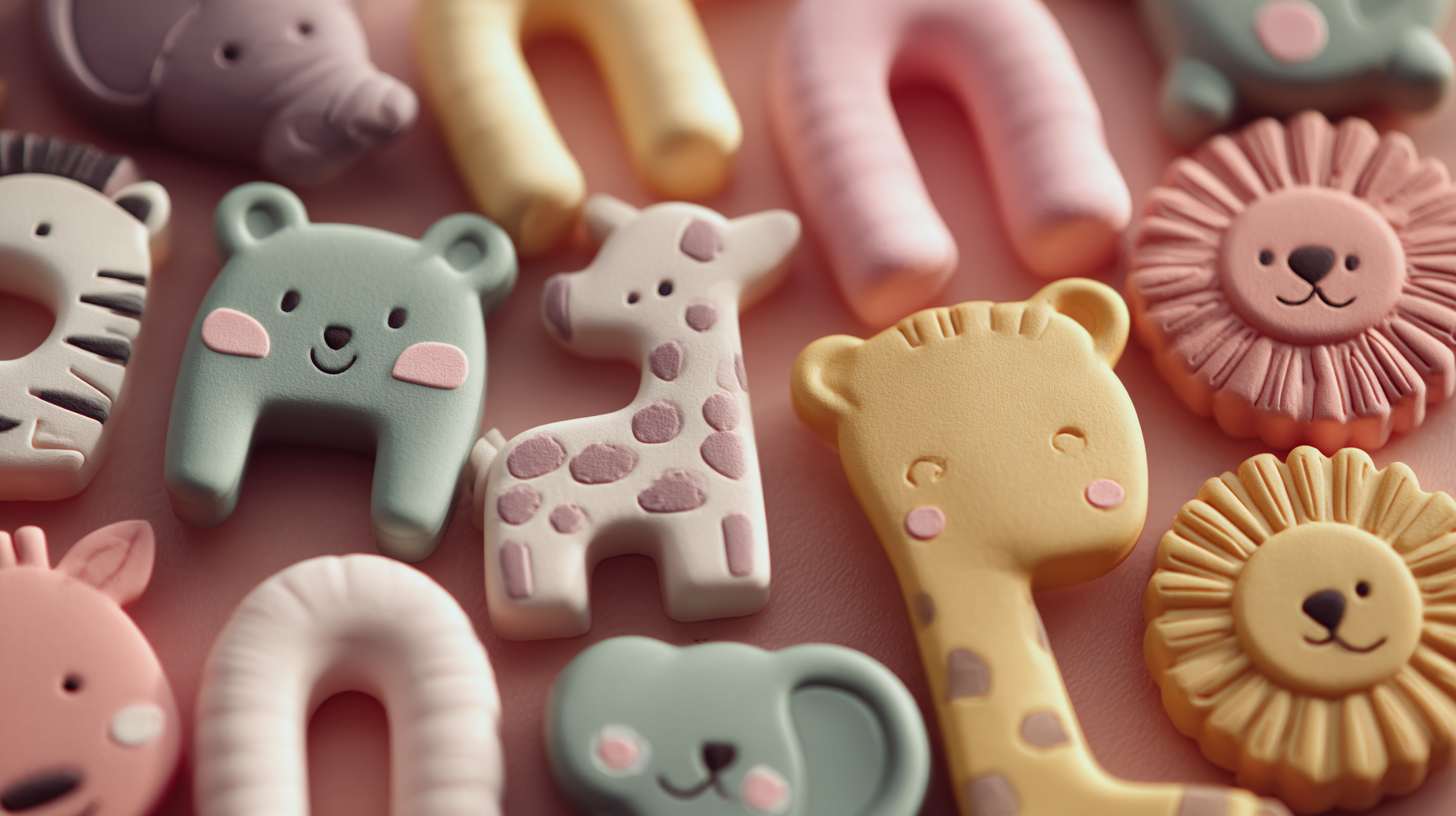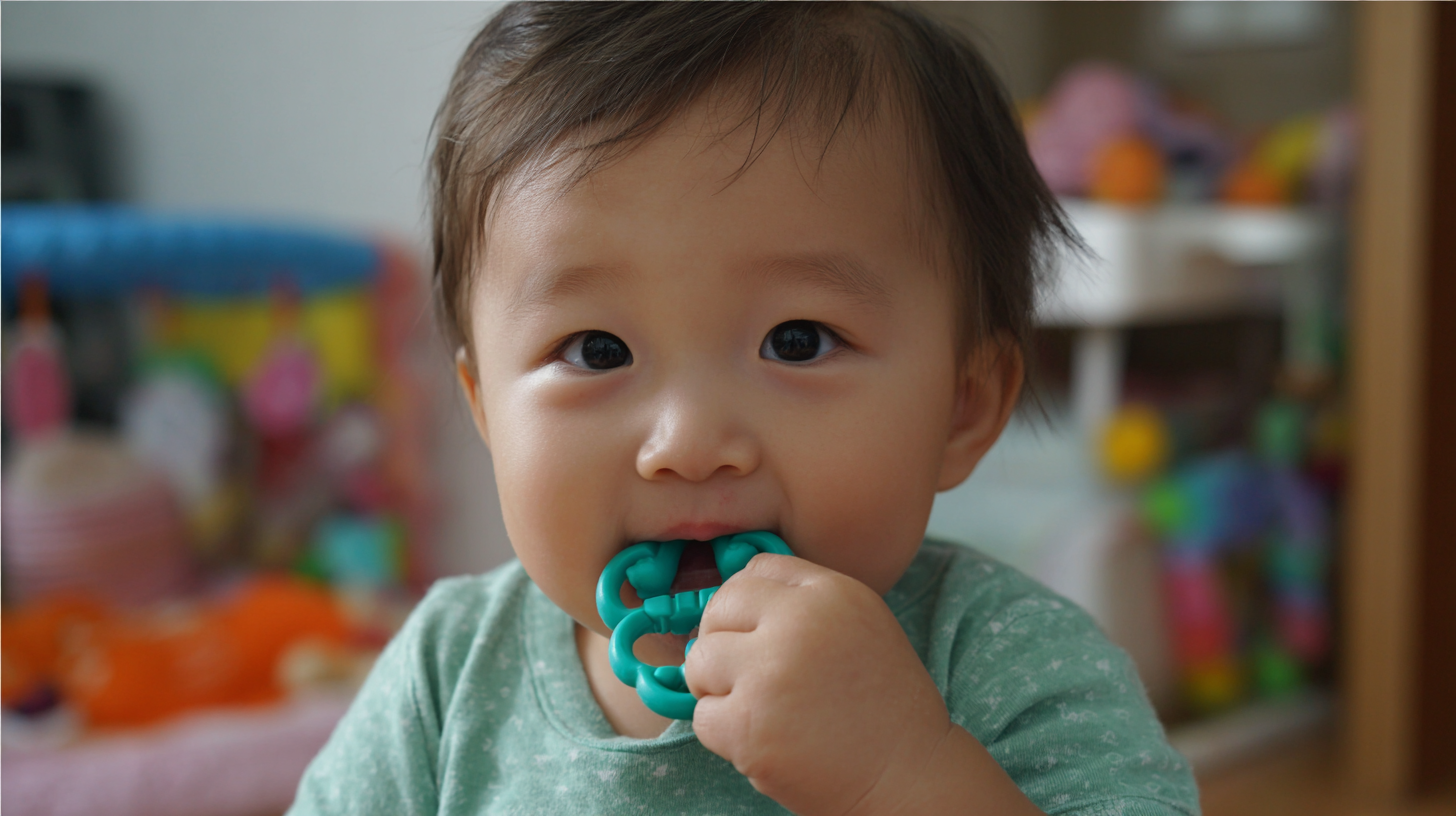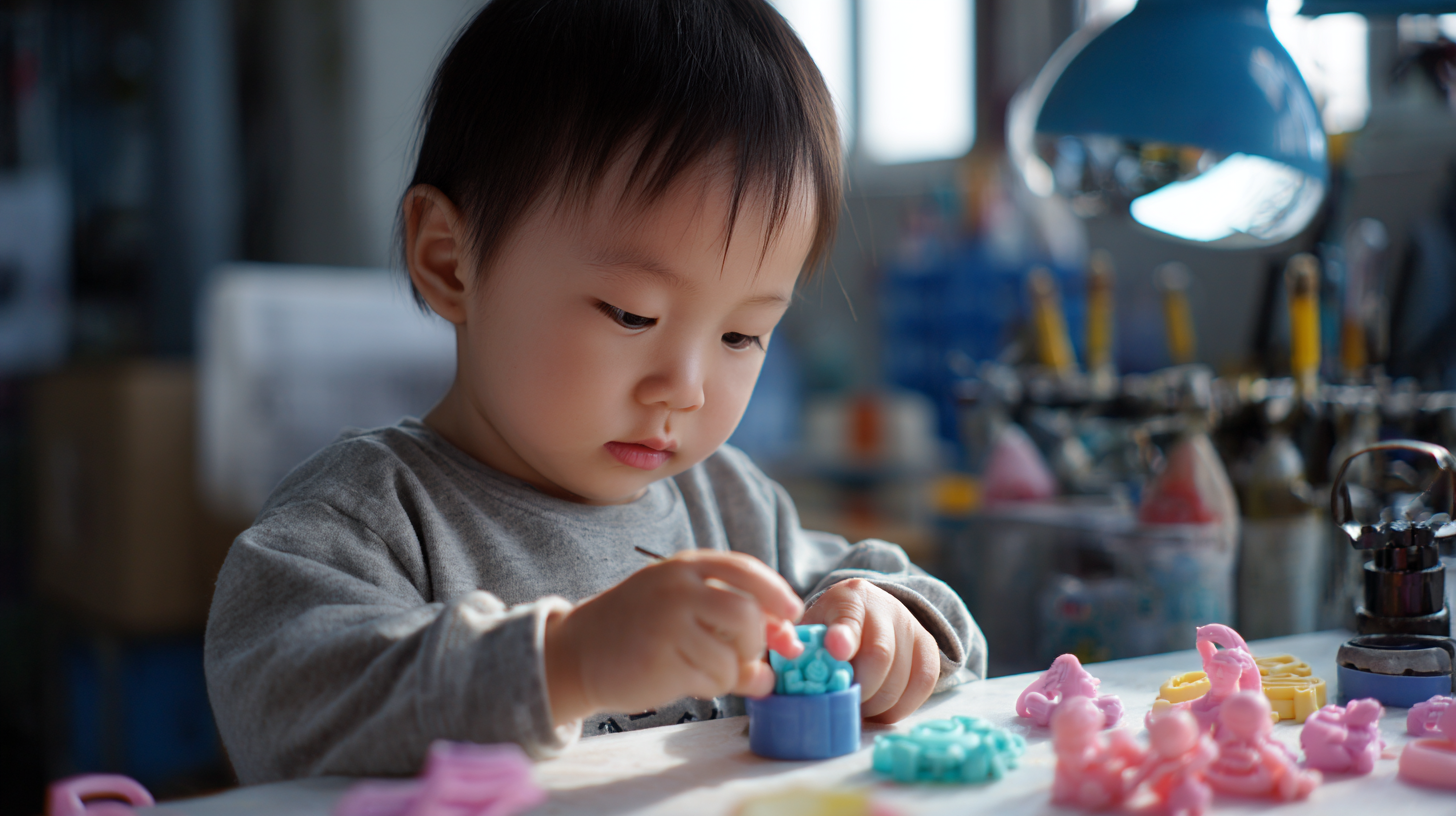
Crafting the Best Baby Teethers with Precision Engineering and Chinese Manufacturing
In the world of infant care, baby teethers play a crucial role in providing comfort and relief to teething babies. As parents seek safe and effective solutions for their little ones, the demand for high-quality baby teethers has surged. This blog will explore the intricate process of crafting the best baby teethers through precision engineering, highlighting the innovative techniques employed in Chinese manufacturing. By delving into industry case studies, we will demonstrate how these methods not only enhance product efficacy but also ensure the safety and durability that parents desire. Additionally, we will provide a 'how-to' guide for selecting or creating baby teethers that meet the highest standards of quality, focusing on materials, design, and manufacturing practices.

Join us as we uncover the fascinating intersection of engineering and childcare, ensuring that the products designed for our children are as exceptional as they are safe.
Understanding the Importance of Quality in Baby Teether Manufacturing
The importance of quality in baby teether manufacturing cannot be overstated. According to a recent report by ResearchAndMarkets, the global baby teething products market is projected to grow at a CAGR of 5.4% between 2021 and 2026. As demand rises, so does the necessity for high-quality manufacturing practices to ensure safety and durability. Parents expect that the products their infants use are devoid of harmful chemicals and designed with precision. In fact, the U.S. Consumer Product Safety Commission (CPSC) has specified that any teething product must pass stringent safety tests, underscoring the need for meticulous engineering in the production process.
Chinese manufacturing has emerged as a pivotal player in the baby teether industry, largely due to its advanced production capabilities and technological expertise. A study published by Statista highlighted that over 30% of baby products are sourced from China, making it essential for manufacturers to adhere to international quality standards. By leveraging precision engineering techniques, companies are able to create teethers that not only meet safety regulations but also offer ergonomic designs that support an infant's oral development. Quality assurance throughout the manufacturing process is crucial, as even minor flaws can lead to significant safety risks, potentially harming the most vulnerable members of society—our babies.

Key Features to Look for in Baby Teether Suppliers
When selecting a baby teether supplier, there are several key features to consider that can significantly influence both the quality of the product and the safety for infants. First and foremost, the materials used are crucial—opt for suppliers who provide options like silicone, rubber, or wood, as these materials are not only safe but also effective in soothing sore gums. It's essential to ensure that the materials are free from harmful chemicals and comply with safety regulations to protect the little ones.
Moreover, the manufacturing process is another important aspect to examine. Suppliers who utilize precision engineering in their production can offer teeters that are more reliable in terms of durability and functionality. Whether it’s through advanced molding techniques or strict quality control measures, these practices lead to high-quality products that parents can trust. Additionally, look for suppliers who provide customization options to cater to different needs and preferences, such as various shapes or textures, making the teething experience more enjoyable for babies. Choosing wisely in these areas can lead to a lucrative partnership in the growing baby teether market.
Evaluating Chinese Manufacturers: What You Need to Know
When it comes to crafting the best baby teethers, understanding the intricacies of Chinese manufacturing is paramount. Chinese manufacturers have gained a significant reputation for their ability to produce high-quality products at competitive prices, making them a go-to choice for brands aiming to deliver safe and effective baby teethers. However, navigating this landscape requires a keen eye for detail and an understanding of various factors that contribute to a successful partnership.
Evaluating potential manufacturers involves several key aspects. First, it’s essential to assess their quality control processes. Responsible manufacturers adhere to strict safety standards and utilize high-grade materials that are free from harmful chemicals, ensuring the end products are safe for infants. Additionally, visiting factories or conducting thorough research on their production practices can provide further insights. It’s also important to consider their capacity for customizations and responsiveness to design changes, as flexibility is crucial in meeting market demands. Ultimately, building relationships with the right Chinese manufacturers can lead to the creation of innovative, precision-engineered baby teethers that cater to the needs of both parents and their little ones.
Strategic Tips for Sourcing High-Quality Baby Teethers Abroad
When sourcing high-quality baby teethers abroad, it’s essential to consider not only the materials used but also the manufacturing processes that ensure safety and durability. According to a report by
Research and Markets,
the global baby teething products market is expected to reach $1.5 billion by 2025, demonstrating a growing demand for safe and effective products. This escalating market trend highlights the necessity for manufacturers to adopt stringent quality control measures and utilize baby-safe materials, such as FDA-approved silicone and BPA-free plastics.
To effectively navigate the sourcing process, buyers should prioritize partnering with manufacturers that have proven expertise in precision engineering and a commitment to high quality. Engaging with manufacturers who adhere to
international safety standards, such as ASTM and EN71, is crucial. Additionally, leveraging platforms like
Alibaba or
Globalsources can facilitate connections with reputable suppliers in China, where a significant portion of baby products is produced. According to
Statista, over 60% of global baby goods are sourced from China, showcasing its dominance in the industry. By following these strategic sourcing tips, companies can enhance their product offerings and ensure they meet the expectations of discerning parents seeking the best for their children.
Ensuring Compliance: Safety Standards for Baby Products
When it comes to baby products, safety is of paramount importance. According to a 2021 report by the Consumer Product Safety Commission (CPSC), approximately 2.5 million infant and toddler-related injuries occur each year in the U.S., with a significant portion attributed to faulty toys and teething devices. This emphasizes the necessity for compliance with rigorous safety standards, especially in the design and manufacturing of baby teethers. Manufacturers must ensure their products meet ASTM F963, a comprehensive standard that outlines safety requirements to protect young children from potential hazards.
In China, the manufacturing of baby teethers has evolved significantly, embracing precision engineering and quality assurance measures that adhere to international safety standards. Reports estimate that over 70% of baby products sold globally are manufactured in China, highlighting the need for strict compliance checks throughout the production process. Leading manufacturers leverage technologies such as advanced molding techniques and material testing to create teethers that are not only safe but also durable and effective. By prioritizing safety standards like EN 71 and ISO 8124, Chinese manufacturers play a crucial role in ensuring that baby teethers are free from harmful substances like BPA and phthalates, thereby safeguarding the well-being of infants around the world.

